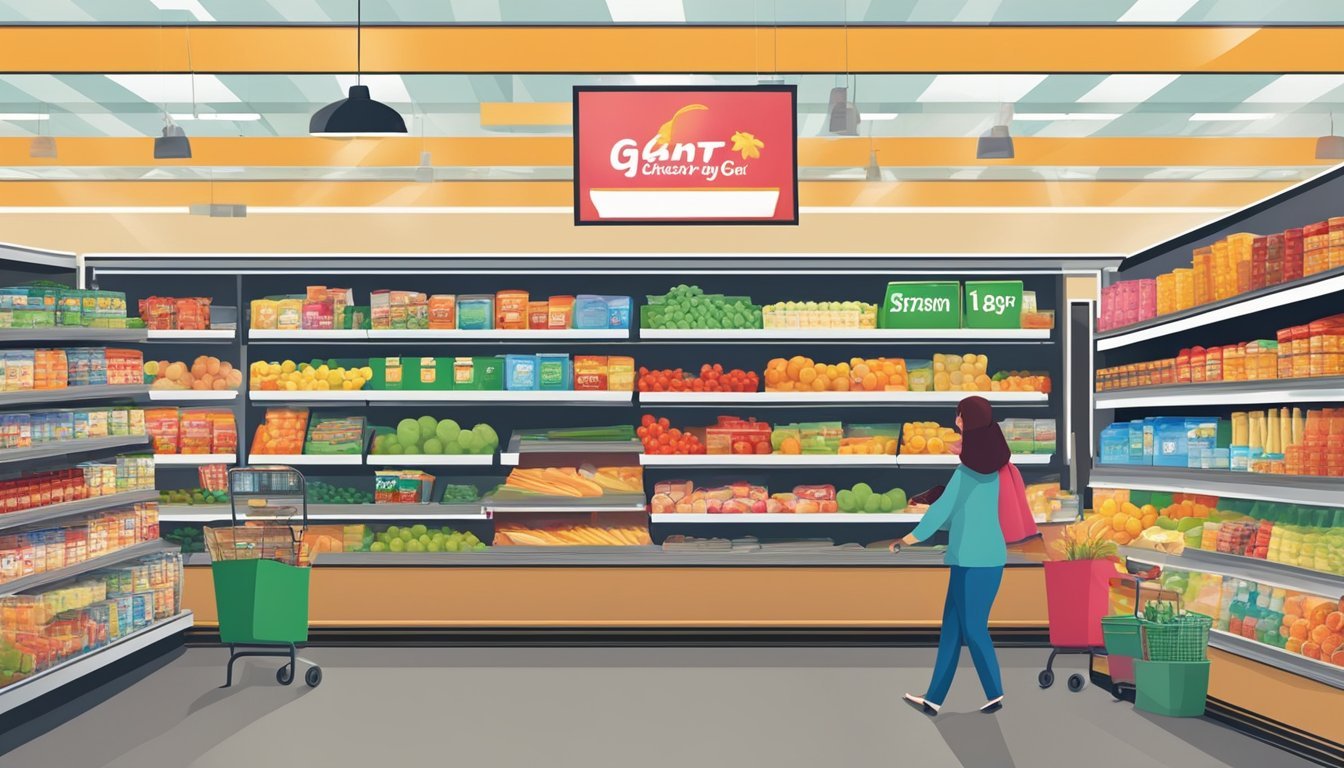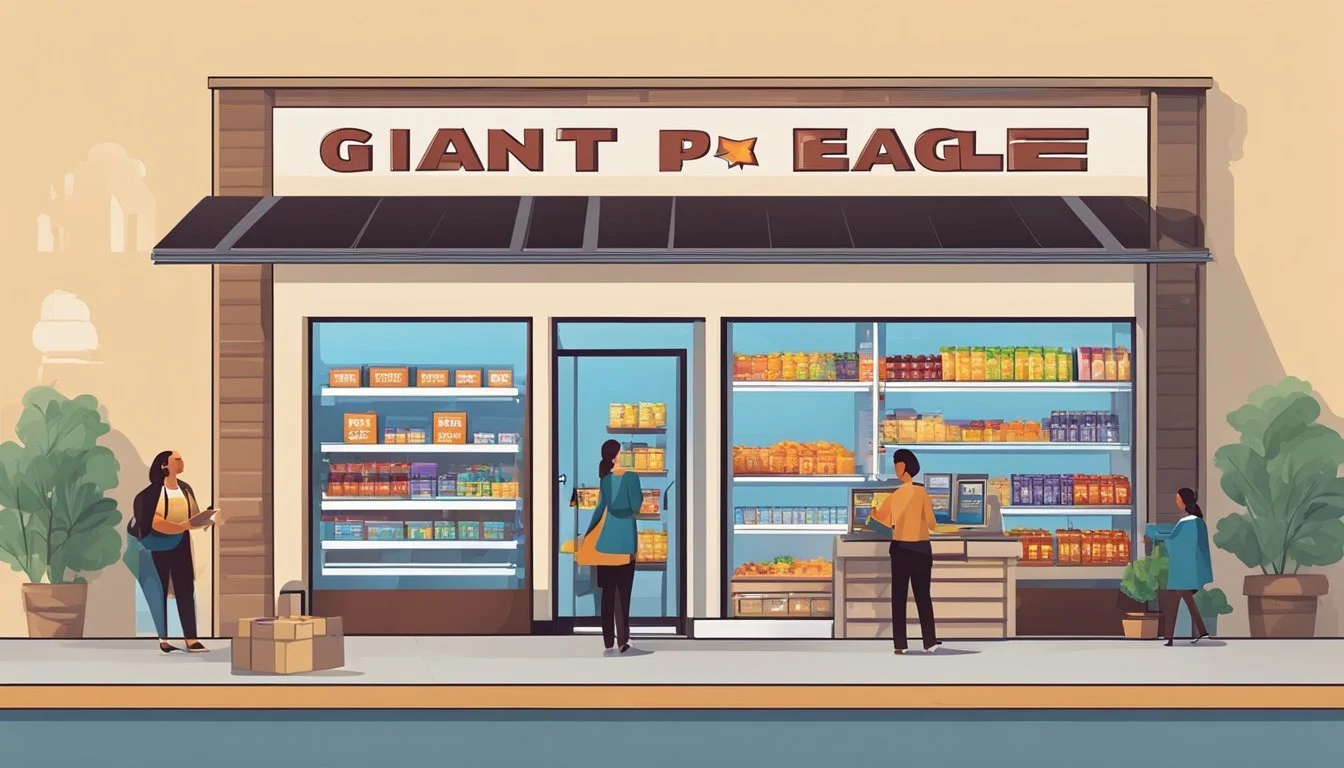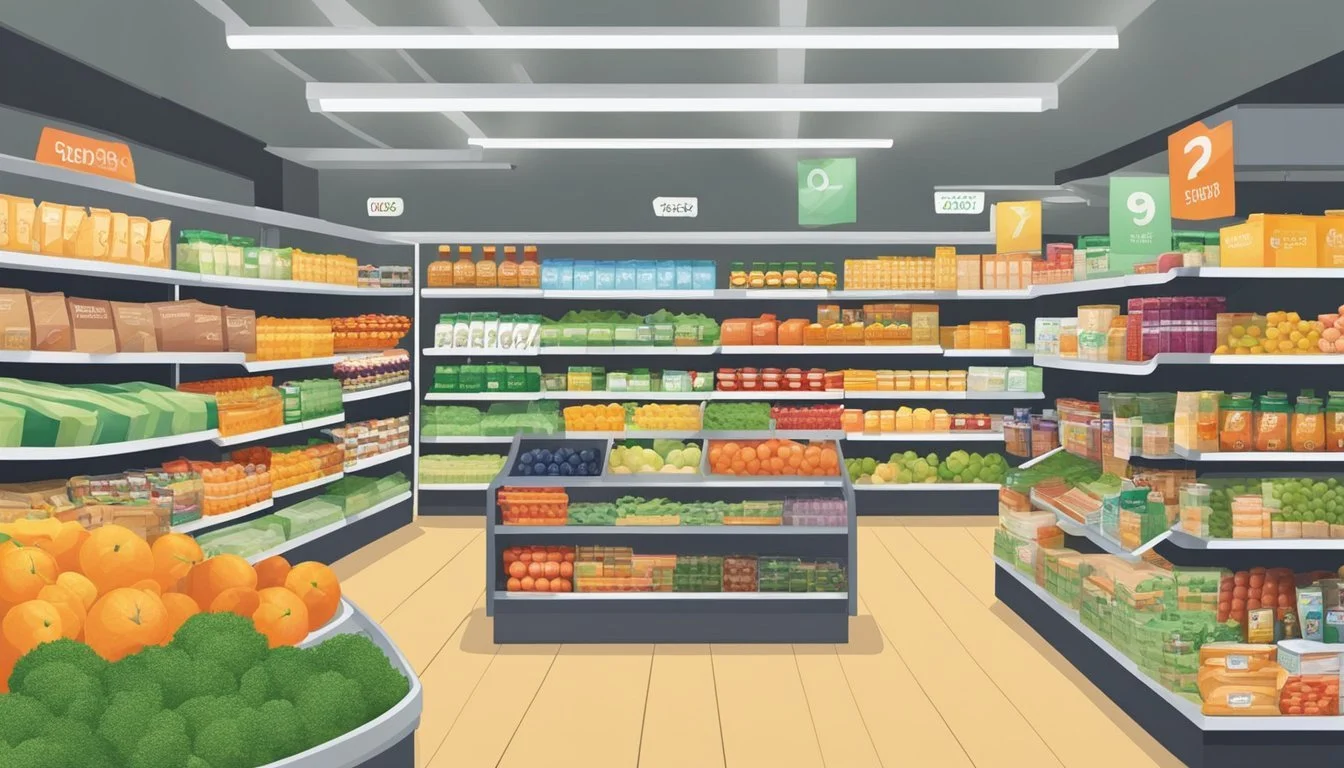Is Giant Eagle Cheaper Than Grocery Outlet?
A price comparison of two popular supermarkets
Giant Eagle and Grocery Outlet are two popular grocery chains that cater to budget-conscious shoppers. Both stores offer a variety of products at competitive prices, but their pricing strategies and store experiences differ significantly.
Giant Eagle is generally more expensive than Grocery Outlet for most grocery items. While Giant Eagle offers a wider selection of products and a more traditional shopping experience, Grocery Outlet focuses on providing deep discounts on overstock and closeout items. This business model allows Grocery Outlet to offer substantially lower prices on many products.
Shoppers seeking the lowest prices on groceries will likely find better deals at Grocery Outlet. However, it's important to note that product availability can be inconsistent due to the store's reliance on overstock items. Giant Eagle, on the other hand, maintains a more consistent inventory and may be preferred by those who value predictability in their shopping experience.
Understanding the Grocery Retail Landscape
The grocery retail landscape is shaped by major supermarket chains and regional players. Price comparisons between stores like Giant Eagle and Grocery Outlet require examining their business models and market positioning.
The Role of Supermarket Chains
Supermarket chains play a crucial role in the grocery retail sector. Giant Eagle, founded in 1918 in Pennsylvania, has grown into a significant player in the Northeast and Midwest. The company operates stores across Pennsylvania, Ohio, Indiana, Maryland, and West Virginia.
Grocery Outlet, in contrast, focuses on a discount model. Both chains contribute to the competitive nature of the grocery industry, offering different shopping experiences and pricing strategies.
Regional chains often tailor their offerings to local preferences, balancing product selection with pricing to attract customers.
Price Comparison Fundamentals
Comparing prices between grocery stores involves several factors. Store locations, supply chain efficiency, and business models all impact pricing strategies.
Giant Eagle typically operates full-service supermarkets with a wide product range. Grocery Outlet specializes in selling overstock and closeout merchandise at discounted prices.
Price comparisons should consider:
Regular prices vs. sale prices
Store brand options
Loyalty program discounts
Product quality and selection
Shoppers often find lower prices on specific items at discount chains like Grocery Outlet. However, selection may be less consistent compared to traditional supermarkets.
Giant Eagle Overview
Giant Eagle is a prominent supermarket chain headquartered in Pittsburgh, Pennsylvania. The company operates over 400 stores across several states and offers a range of products and services to customers.
History and Expansion
Giant Eagle was founded in 1931 by five families in Pittsburgh. The company began as a small grocery business and gradually expanded its operations. In the 1980s, Giant Eagle introduced its first supermarket format stores, which combined food and drug stores under one roof.
The chain continued to grow throughout the 1990s and 2000s, acquiring smaller regional chains and expanding into new markets. Giant Eagle now has a significant presence in Pennsylvania, Ohio, West Virginia, Indiana, and Maryland.
Service and Store Features
Giant Eagle stores offer a wide selection of groceries, fresh produce, meats, and baked goods. Many locations include in-store pharmacies, providing prescription services and health consultations.
The company's loyalty program, called fuelperks+, rewards customers with discounts on gasoline purchases at GetGo convenience stores. This program has been a key differentiator for Giant Eagle in competitive markets.
Giant Eagle has also embraced technology, offering online ordering and curbside pickup services at many locations. Some stores feature specialized departments like cheese shops, sushi bars, and prepared food sections to cater to diverse customer preferences.
Grocery Outlet Overview
Grocery Outlet offers significant discounts on name-brand products through a unique business model and strategic purchasing. The company leverages opportunistic buying to secure deals and pass savings to customers.
Business Model Insights
Grocery Outlet operates as a chain of independently owned stores. Each location is run by local operators who tailor inventory to their community's preferences. The company sources products through closeouts, overstock, and packaging changes.
This approach allows Grocery Outlet to offer substantial discounts compared to traditional supermarkets. By purchasing excess inventory from manufacturers, they can sell items at 40-70% below conventional retail prices.
Stores carry a rotating selection of products, creating a "treasure hunt" shopping experience. This model encourages frequent visits as customers seek out new deals.
Discount Strategy
Grocery Outlet's discount strategy centers on opportunistic buying and efficient operations. They purchase surplus inventory, discontinued items, and products near expiration dates at steep discounts.
The company then sells these items at prices lower than most competitors, including Aldi and WinCo. Grocery Outlet's bargain-focused approach attracts budget-conscious shoppers seeking savings on name-brand goods.
Product selection varies by store and changes regularly. Customers can find discounts on groceries, household items, and even wine. The unpredictable inventory keeps prices low and shoppers engaged.
Grocery Outlet's strategy allows them to compete effectively with larger chains while maintaining a loyal customer base seeking value.
Price Analysis: Comparing Costs
Giant Eagle and Grocery Outlet offer distinct pricing strategies that impact consumers' grocery bills. Examining price tags and promotional offers reveals key differences between these retailers.
Price Tag Metrics
Giant Eagle typically maintains standard pricing on conventional grocery items. Their selection often includes both name-brand and private-label products across various categories. Grocery Outlet, in contrast, focuses on selling overstocked or closeout items at discounted rates.
Food prices at Grocery Outlet can be 40-70% lower than traditional supermarkets. This discount model allows shoppers to find significant savings on many products. However, inventory at Grocery Outlet can be unpredictable due to their sourcing methods.
Giant Eagle's pricing aligns more closely with competitors like ShopRite or Walmart. They aim to remain competitive while offering a consistent shopping experience.
Impact of Offers and Discounts
Both retailers employ different discount strategies to attract customers. Giant Eagle utilizes a loyalty program called "fuelperks+" that offers fuel discounts and personalized savings. They also provide weekly circular deals and digital coupons.
Grocery Outlet doesn't offer a formal loyalty program. Instead, they rely on their everyday low prices as their main draw. They occasionally feature special "WOW deals" for extra savings.
Giant Eagle's promotions can lead to substantial savings for regular shoppers who maximize their rewards. Grocery Outlet's model benefits those willing to be flexible with their shopping list based on available discounts.
Coupons play a larger role at Giant Eagle, where manufacturer and store coupons are widely accepted. Grocery Outlet generally doesn't accept manufacturer coupons due to their discount model.
Assessing Product Quality and Selection
Giant Eagle and Grocery Outlet offer distinct approaches to product quality and selection. Their strategies impact the freshness, variety, and value customers can expect when shopping at each store.
Fresh Produce and Perishables
Giant Eagle emphasizes quality in its produce section. The store stocks a wide range of fresh fruits and vegetables, including organic options. Lettuce, tomatoes, potatoes, and carrots are typically fresh and well-maintained. The meat department offers various cuts and grades, while the deli provides sliced meats and cheeses.
Grocery Outlet's produce selection can be more limited. The quality of fruits and vegetables may vary, as some items are sourced from surplus inventory. However, this can lead to lower prices on seasonal produce. The store's meat and dairy sections often feature brand-name products at discounted rates.
General Merchandise and Grocery Items
Giant Eagle carries a comprehensive selection of dry goods and frozen foods. The store's product range includes national brands and its own private label items. Customers can find a variety of pasta, rice, canned goods, and baking supplies.
Grocery Outlet's inventory is more dynamic, changing frequently based on available deals. This can result in an eclectic mix of products, including some unique or hard-to-find items. The store often stocks discontinued or overstock products from major brands at reduced prices.
Both stores offer frozen foods, though Giant Eagle typically has a more consistent selection. Grocery Outlet may have limited-time deals on frozen meals or specialty items.
Convenience Features and Customer Service
Giant Eagle and Grocery Outlet offer distinct shopping experiences with unique convenience features and customer service approaches. Both stores aim to cater to shoppers' needs through various programs and services.
Shopping Experience
Giant Eagle provides a more traditional supermarket experience. Stores often feature full-service departments like bakeries, delis, and seafood counters. Many locations offer sushi stations and prepared meal options for quick dinner solutions. The layout is typically spacious, allowing for easy navigation.
Grocery Outlet focuses on a no-frills approach. Stores are smaller and organized to highlight discounted products. The inventory changes frequently, creating a "treasure hunt" atmosphere. While this can make meal planning challenging, it appeals to bargain hunters.
Both chains employ knowledgeable staff to assist customers. Giant Eagle tends to have more employees available throughout the store, while Grocery Outlet operates with a leaner team.
Loyalty Programs and Customer Engagement
Giant Eagle's fuelperks+ program rewards shoppers with discounts on gas and groceries. Members earn points on purchases, which can be redeemed for savings. The program integrates with digital coupons and personalized offers through the Giant Eagle app.
Grocery Outlet doesn't offer a traditional loyalty program. Instead, they focus on consistently low prices across the store. Some locations may have email lists or social media pages that share weekly deals and special promotions.
Giant Eagle provides online ordering and curbside pickup at many locations. They also offer home delivery services in select areas. Grocery Outlet generally doesn't provide these digital shopping options, maintaining their in-store bargain model.
Geographical Presence and Accessibility
Giant Eagle and Grocery Outlet have distinct regional footprints and market penetration strategies. Their store locations and accessibility significantly impact customer shopping options and pricing in different areas.
Regional Footprint
Giant Eagle operates primarily in the Northeast and Midwest United States. The chain has a strong presence in Pennsylvania, Ohio, West Virginia, Maryland, and Indiana. Giant Eagle's concentration in these states allows for efficient distribution networks and regional brand recognition.
Grocery Outlet, on the other hand, has a broader but less dense footprint. The company focuses on the West Coast and select Eastern states. Its expansion strategy targets opportunistic real estate deals, often in areas with lower operating costs.
Local Market Penetration
Giant Eagle aims for deep market penetration in its core regions. In many communities across Pennsylvania and Ohio, Giant Eagle stores are fixtures of local shopping centers. This saturation allows the chain to leverage economies of scale and maintain competitive pricing.
Grocery Outlet adopts a different approach. The company seeks out underserved markets or areas with high-priced competitors. This strategy enables Grocery Outlet to offer lower prices by avoiding direct competition with established chains in prime locations.
In urban areas, Giant Eagle often operates larger format stores with wide selections. Grocery Outlet typically chooses smaller locations, focusing on discount offerings rather than extensive product ranges.
Retail Marketing and Brand Perception
Giant Eagle and Grocery Outlet employ distinct marketing approaches to shape their brand images and attract customers. These strategies impact how shoppers perceive value and quality at each store.
Brand Loyalty and Public Image
Giant Eagle focuses on building long-term customer relationships through its loyalty program, fuelperks+. This rewards system offers discounts on gas and groceries, incentivizing repeat visits. The company's community involvement and local partnerships contribute to a positive public image.
Grocery Outlet, on the other hand, positions itself as a discount treasure hunt destination. Its ever-changing inventory of closeout and overstock items creates an exciting shopping experience. This approach appeals to bargain-seekers but may not foster the same level of brand loyalty as Giant Eagle's consistent offerings.
Both chains prioritize customer service, though Giant Eagle's full-service model contrasts with Grocery Outlet's no-frills approach.
Promotional Strategies
Giant Eagle leverages weekly circular ads, digital coupons, and personalized offers through its mobile app. The chain promotes a mix of national brands and its own Market District and Nature's Basket private labels. These store brands offer quality alternatives at competitive prices.
Grocery Outlet's marketing emphasizes extreme discounts, often up to 70% off retail prices. The company relies heavily on word-of-mouth and local advertising to promote its bargains. Unlike Giant Eagle, Grocery Outlet doesn't offer a traditional loyalty program or digital coupons.
Both retailers use social media and email marketing to engage customers and highlight deals. However, Giant Eagle's more comprehensive digital presence aligns with its broader range of services and products.
Final Considerations for Shoppers
When deciding between Giant Eagle and Grocery Outlet, shoppers should weigh factors beyond just price. Store layout, product selection, and rewards programs can significantly impact the overall shopping experience and potential savings.
Making Informed Shopping Decisions
Shoppers should compare prices on frequently purchased items at both stores. Giant Eagle often offers competitive prices on produce, milk, and other staples. Grocery Outlet may have lower prices on certain packaged goods and specialty items.
Cleanliness and store organization play a role in the shopping experience. Giant Eagle typically maintains well-organized aisles and a clean environment. Grocery Outlet's layout may vary by location, so customers should familiarize themselves with their local store.
Checkout options differ between the two chains. Giant Eagle usually provides both staffed lanes and self-checkout, while Grocery Outlet may have more limited options.
Strategies to Maximize Value
Loyalty programs can lead to substantial savings. Giant Eagle's fuelperks+ rewards program offers discounts on gas and groceries. Shoppers should check if their local Grocery Outlet offers any similar incentives.
Planning meals around weekly sales can reduce grocery bills. Both stores typically release weekly ads, allowing customers to plan their shopping lists accordingly.
Buying in bulk can be cost-effective for non-perishable items. Shoppers should compare unit prices to ensure they're getting the best deal.
Timing purchases around seasonal promotions can yield additional savings. Both retailers often offer discounts on holiday-related items and seasonal produce.










